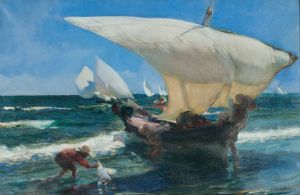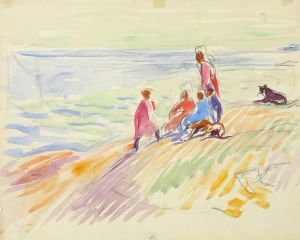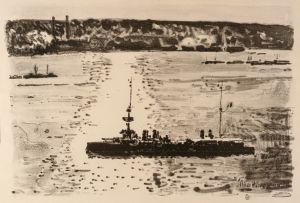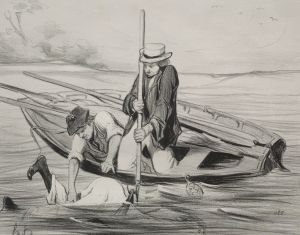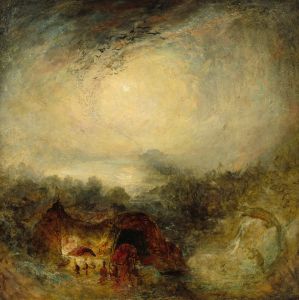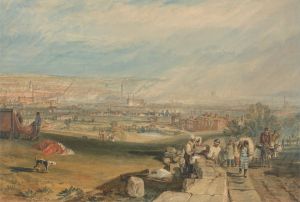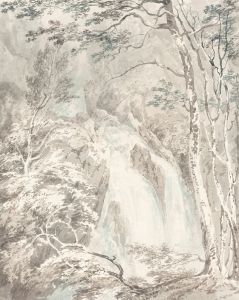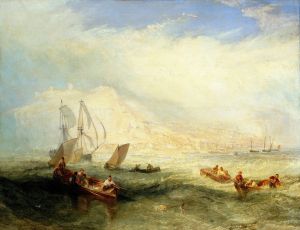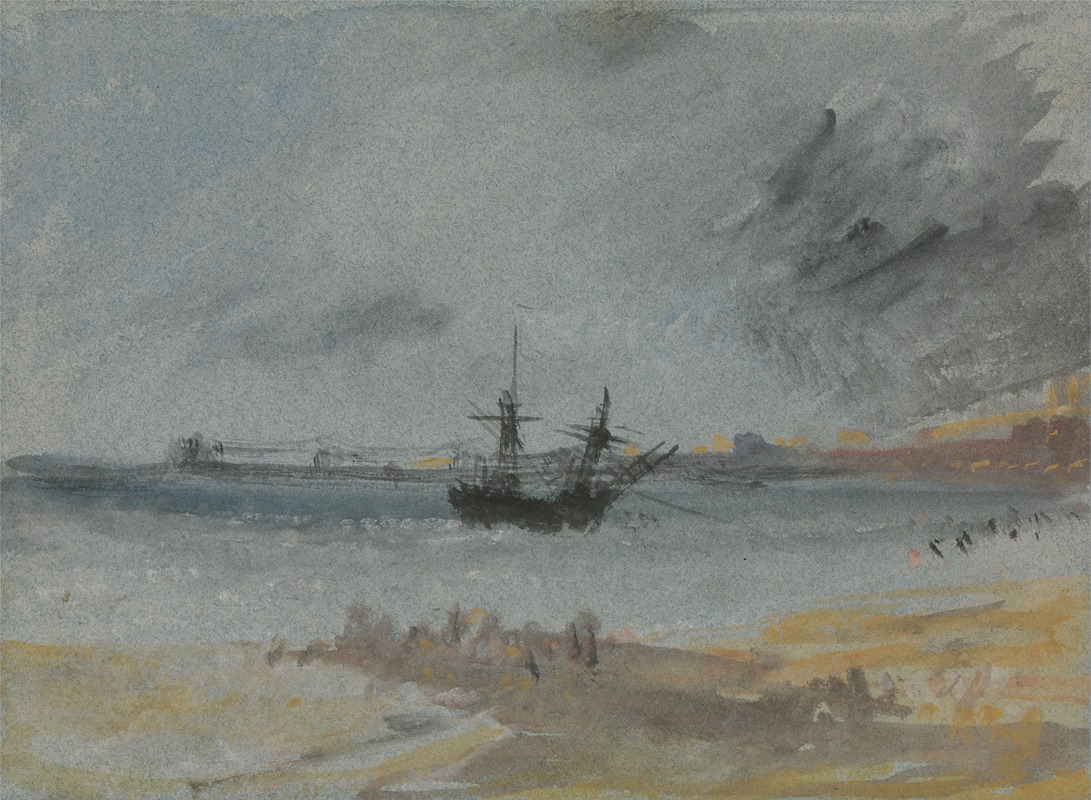
Ship Aground Brighton
A hand-painted replica of Joseph Mallord William Turner’s masterpiece Ship Aground Brighton, meticulously crafted by professional artists to capture the true essence of the original. Each piece is created with museum-quality canvas and rare mineral pigments, carefully painted by experienced artists with delicate brushstrokes and rich, layered colors to perfectly recreate the texture of the original artwork. Unlike machine-printed reproductions, this hand-painted version brings the painting to life, infused with the artist’s emotions and skill in every stroke. Whether for personal collection or home decoration, it instantly elevates the artistic atmosphere of any space.
"Ship Aground, Brighton" is a painting by the renowned British artist Joseph Mallord William Turner (1775–1851). Turner, celebrated for his innovative and atmospheric landscapes and seascapes, is often regarded as one of the greatest painters of the Romantic period. This particular work is believed to have been created during the early 19th century, a time when Turner was actively exploring themes of nature, maritime life, and the interplay of light and atmosphere.
The painting depicts a ship stranded on the shore near Brighton, a coastal town in southern England. Brighton was a popular seaside destination during Turner's time, known for its picturesque coastline and growing reputation as a retreat for the upper classes. The scene captures the dramatic moment of a vessel run aground, with the turbulent sea and overcast skies contributing to the sense of tension and natural power. Turner's mastery of light and color is evident in the way he conveys the dynamic energy of the waves and the atmospheric conditions surrounding the stranded ship.
Turner frequently drew inspiration from maritime subjects, reflecting both his personal fascination with the sea and the broader cultural significance of Britain's naval power during the 19th century. His ability to depict the sublime—nature's overwhelming force and beauty—was a hallmark of his work, and "Ship Aground, Brighton" exemplifies this approach. The painting demonstrates Turner's skill in capturing the interplay between human activity and the vast, uncontrollable forces of nature.
The exact date of the painting's creation is not definitively documented, but it is consistent with Turner's style and thematic focus during the early to mid-19th century. The work is also notable for its loose, expressive brushwork, which became increasingly characteristic of Turner's later career. This technique allowed him to convey a sense of movement and emotion, emphasizing the drama of the scene rather than precise detail.
"Ship Aground, Brighton" is part of Turner's extensive body of work, which includes oil paintings, watercolors, and sketches. Many of his works are housed in major collections, including the Tate Britain in London, which holds the Turner Bequest—a vast collection of the artist's works donated to the nation upon his death. However, specific details about the current location or ownership of this particular painting are not readily available.
Turner's legacy as a pioneering artist continues to influence and inspire generations of painters and art enthusiasts. His ability to capture the essence of nature's power and beauty remains a defining feature of his work, as exemplified by "Ship Aground, Brighton."





